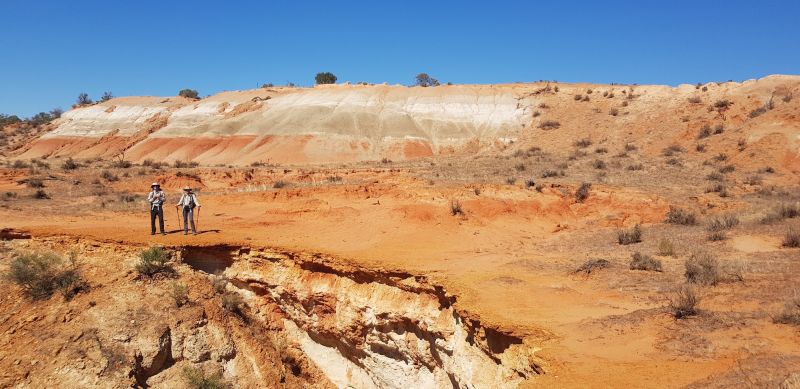Riverland Ramsar Site
The Riverland Ramsar Site is an internationally recognised wetland system of 30,615 hectares extending north-east of Renmark with a boundary that follows the 1956 floodline to the New South Wales border. It includes two major anabranch systems (Chowilla Creek and Ral Ral Creek) along an 80 km stretch of the River Murray, incorporating a series of creeks, channels, lagoons, billabongs, swamps, and lakes.
Water is the life-giving feature in this arid landscape that creates rich and diverse habitats for wildlife. Each vegetation type is determined by elevation on the floodplain and therefore the frequency of flooding. Bordered by cliffs and the dry sandy Mallee ecosystems, many bird and mammal species traverse both the Mallee and the valley for feeding, drinking, and breeding.
River channels, creeks, and oxbows
These permanent water features are the habitats of 16 freshwater fish species including the largest freshwater fish, Murray Cod, and 3 species of turtle including the common Long-necked turtle. The connected backwaters and shallow wetlands often with towering dead redgums support Whistling Kite nests and remind us of a former ephemeral river that flooded and dried frequently, where trees drowned after the weirs were built in the 1920s and 1930s. Fish eating birds including Australian pelicans, four species of cormorants and Australian darters frequent these areas.
Clamorous reed-warblers visit during the warmer months and are frequently heard in the reed and rush lined edges where Purple Swamphen appear. The native water rat is often seen swimming and occasionally emus will swim from one bank to the other. Koalas feed in the treetops along the river’s edge and Echidnas are often seen on the riverbank. The largest of the river reptiles, the Lace Monitor is never far from water and will often present as soon as temperatures rise in August through to May.
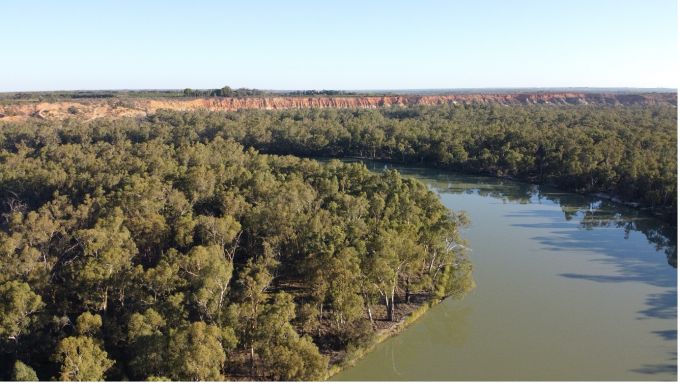
Redgum forests
Redgum forests are found on the low river terraces and flood with just a small rise in river level, dominating the banks of the river, where White-plumed honeyeaters, Striped honeyeaters and Striated Pardalotes are busy, and the endangered Regent Parrot nests in hollows. Several parrot species compete for nesting hollows including Australian ringnecks, Red-rumped parrots and the Crimson Rosella, Sulphur crested cockatoos and Little corellas. Fish eating Sacred kingfishers and Kookaburras frequent these areas too. The low terraces provide understory habitats of lignum thickets and Cooba wattle which are ideal habitats for smaller Superb and Variegated Fairywrens, Yellow-rumped and Chestnut-rumped thornbills and mistletoe birds that live in symbiosis with the parasitic mistletoe plants that grow on redgums, cooba and Black-box.
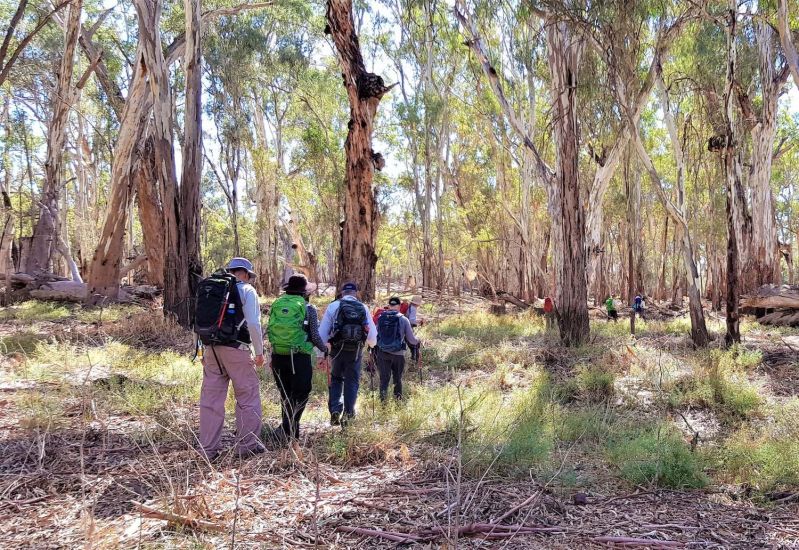
Black Box woodlands
Black box woodlands are a feature of the higher terraces on the floodplain and can survive with less frequent flooding. Large horizontal branches will support White-winged chough mud nests, and Black-faced cuckoo shrikes, Pied and Grey butcherbirds and White-winged Trillers, whilst understories of dryland ti-tree, old man saltbush, showy daisy, ruby saltbush, and emu bush provided ideal habitats for Spiny-cheeked honeyeaters, Dusky Woodswallows, White-browed babblers, Red-capped Robins, Brown treecreepers, Rufous whistler, Gilbert’s whistler and fairywrens. Brush-tailed possums are common in these landscapes.
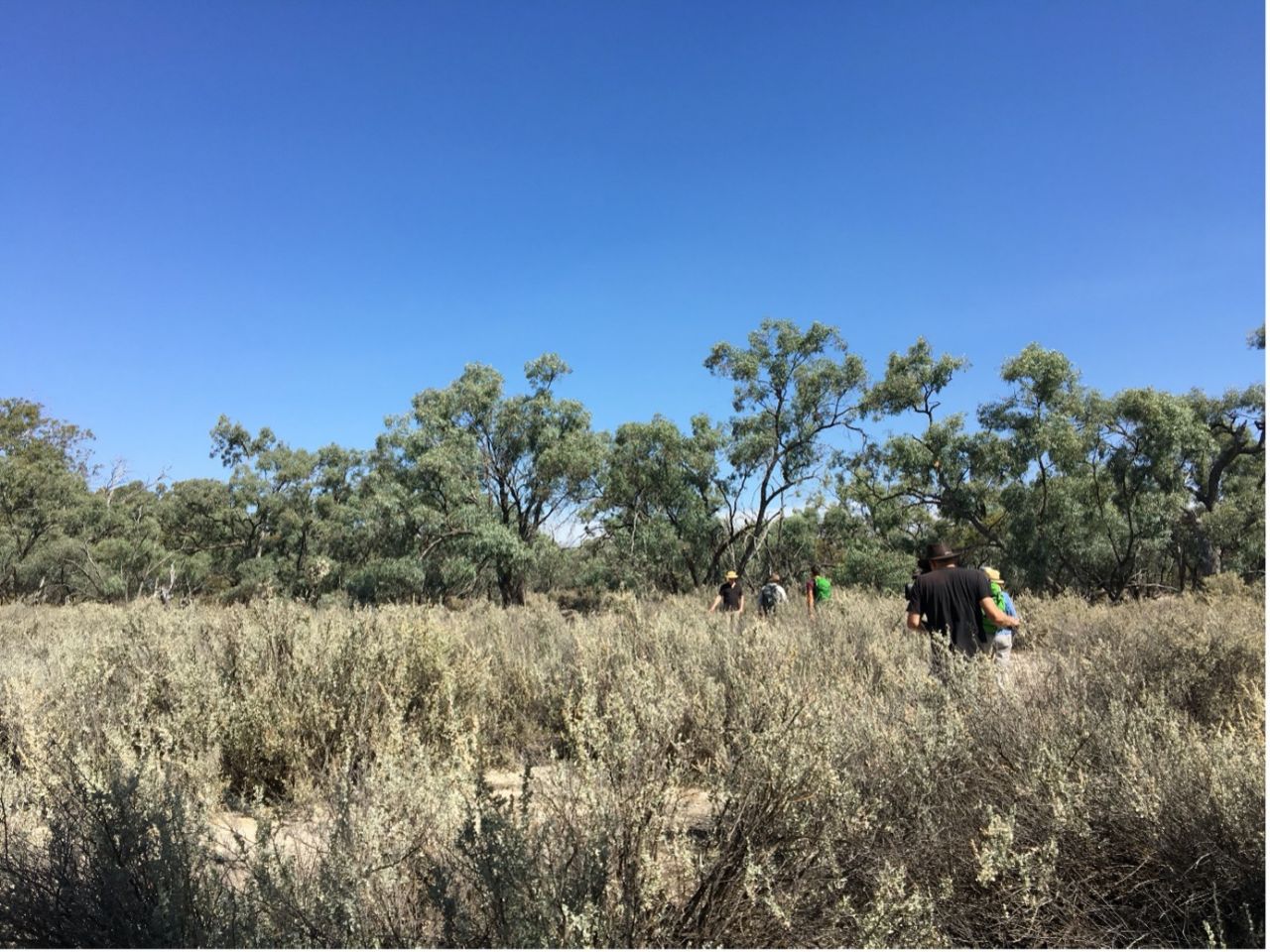
Ephemeral lakes
Several large shallow wind-formed lakes lie on the outer floodplain and connect to the river during environmental watering events and natural floods. They teem with birdlife for long periods after filling in spring.
Black swans nest on floating platforms at the edge and many waders including red-necked avocets and pied stilts forage around the margins. Eight species of ducks including spectacular Pink-eared duck and Blue-winged Shoveler can often be seen amongst thousands of Grey teal. Swamp harriers, Little eagles, Wedge-tailed eagles and White-bellied sea-eagles are often seen perching and circling as they eye their prey in these productive wetlands.
In spring through to early autumn, the intercontinental migratory species arrive from Alaska and Siberia to feed, including Red-necked Stints and Sharp-tailed Sandpipers. Red kangaroos and emus will often wander down for a drink at the lake edge, and cockatiels and Blue-bonnets are often seen around the margins of the lakes.
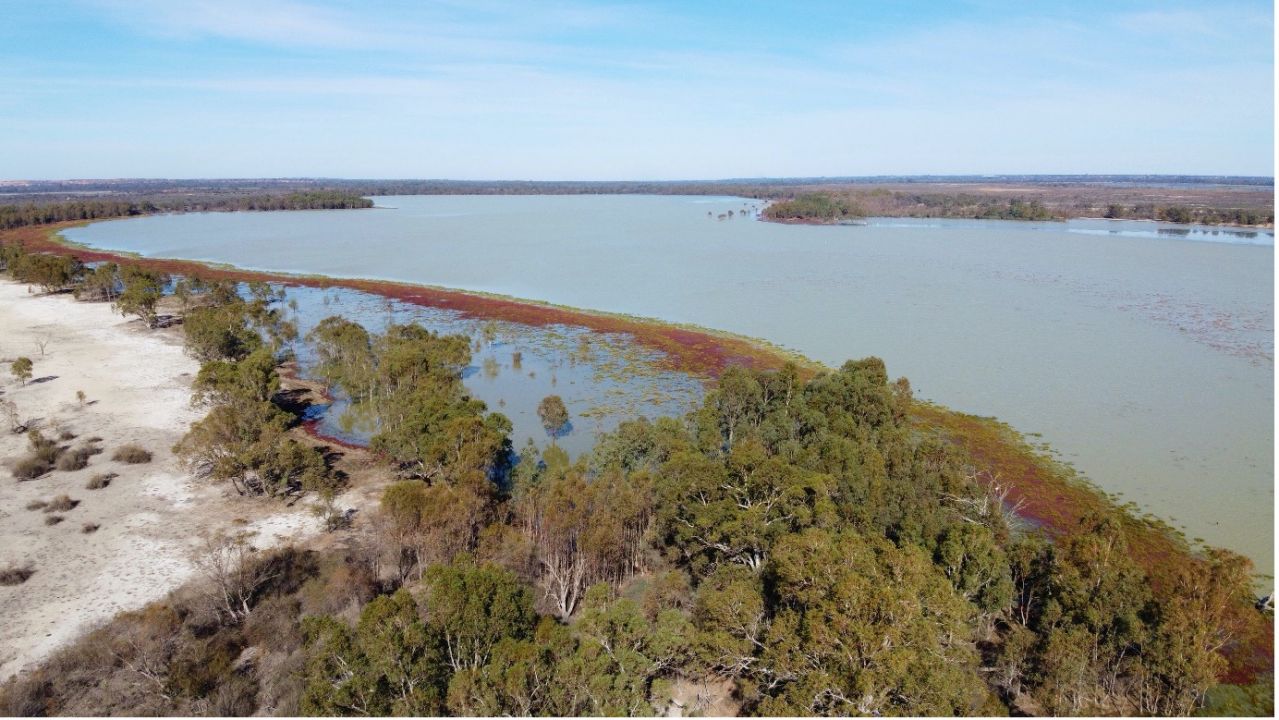
Open floodplains and islands
The vast open floodplains that lie away from the river are often dominated by salt tolerant plant species including the spectacular purple flowing pigface, samphire, glassworts, bluebush and saltbush species. Red and Grey kangaroos are often seen grazing these more open areas at night. White-fronted chats and White-winged Fairywrens often range in these areas.
Cliff edges, remnant dunes and peninsulas
These ochre-coloured sandy rises are colonised by Native pine and she-oaks, acacias, hopbush and emu-bush, and the spectacular Murray lily and Garland Lily that flower and transform the landscape after soaking rains. Beautiful Rainbow bee-eaters will build tunnels to nest in when they arrive from northern Australia in October, and they will remain until late Autumn before returning with their offspring. Peregrine falcons and Nankeen Kestrels roost and nest in the cliffs, whilst Fairy martins build their mud nests under the cliff ledges where they are dry and safe.
